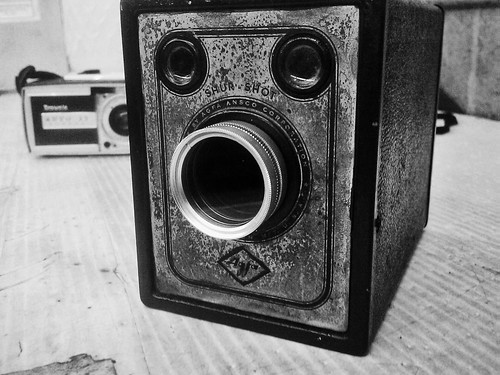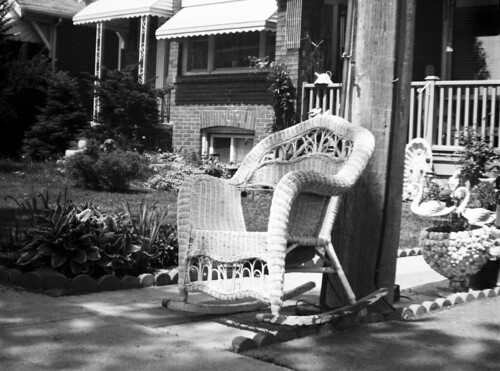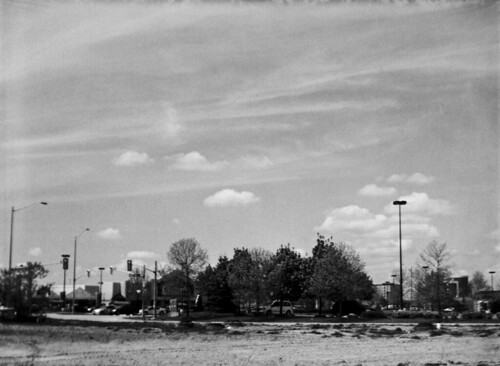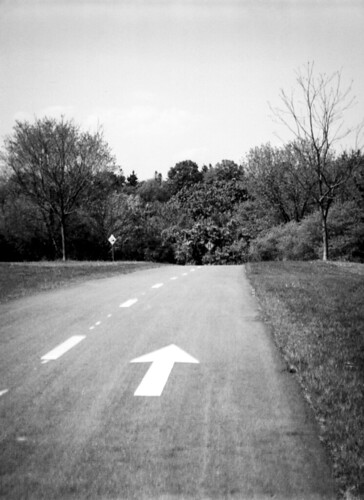 The oddity about it is that it is designed as a snap-shot daily use camera that can be used indoors and outdoors, but strangely enough, I don't quite get, how you can shoot indoors without a Flash Sync and no tripod mount. It has a "BULB" feature by pulling out the TIME slider, but does not have a tripod mount. There are also no threads in the lens for any filters to be attached to this, but you can get a press in Portrait Attachment which will change the focusing from 8 feet to 5 feet.
The oddity about it is that it is designed as a snap-shot daily use camera that can be used indoors and outdoors, but strangely enough, I don't quite get, how you can shoot indoors without a Flash Sync and no tripod mount. It has a "BULB" feature by pulling out the TIME slider, but does not have a tripod mount. There are also no threads in the lens for any filters to be attached to this, but you can get a press in Portrait Attachment which will change the focusing from 8 feet to 5 feet. I do not have one of those, but I'm sure I can easily adapt me Kodak no. 6 to work with it. I'll have to try that and see.
Another nifty feature is that you can shoot 16 frames of film with this camera instead of just 8. What I mean by that, of course, is that you can shoot half-frames by folding down 2 flaps inside the camera to mask off the film area. This allows you to double the amount of exposures you get on your 120 film, plus I find you get a better over-all image considering that you do not go to the extreme corners of the lens coverage.

In the center of the lens, the image is very sharp, and very contrasty. The negatives are fantastic, and even though this film expired in 1990 (frozen since new) there is no degredation in the film quality at all, or if there is, it is extremely minor to negligable. Through this image (right), you can see the sharpness that I wasn't expecting, the slider was at ƒ/22, especially in the centre of the image. As it moves further back, though, you can see where the image begins to lose its sharpness, but not quite so much in this photo.
The next one that I am sharing, below, is another one that really surprised me.
Having bright blue skies is never a good idea when shooting B&W film without either a Polarizer, or Red Filter. The sky has a tendancy to come out as a light gray colour instead of a darker gray. That's where the yellow filter comes in and the sky will become fairly darker.
This shot (left) was taken with the yellow filter in place and a Polarizer filter in place as well. The funny part is that there are no threads for a filter to be screwed to the front, but the opening size is about 30.5mm which is perfect to attempt a screw on filter. It worked too, considering that the filter sat in place and is still actually attached to the camera.
The in camera yellow filter is a very nice feature for this camera, which will help darken skies, rendering them a nice easy shade of gray, which will help the clouds become far more contrasty and show up much nicer against the darker b/g.
At ƒ/22 (filter aperture slider all the way out) the image becomes more sharp throughout as it is now rendering the image using only the center (sharpest part) of the Meniscus lens, which makes this camera really stand out from its competitors.
Granted, you still don't get ultra sharp images that you would expect from a more modern camera, but this is hardly a modern camera.
 Lastly, of course, is a sample image of how the Yellow filter makes a dull image grand. Sure, there is a lot of sky in this image, but that's the point. There was some high cirrus clouds and some much lower and bigger cumulus clouds, which always make a sky far more interesting. Sure, you can shoot it in colour and get the full effect of a clouded sky without the aid of any filters, although a Circular Polarizer will definitely help in that aspect to darken the blue a touch.
Lastly, of course, is a sample image of how the Yellow filter makes a dull image grand. Sure, there is a lot of sky in this image, but that's the point. There was some high cirrus clouds and some much lower and bigger cumulus clouds, which always make a sky far more interesting. Sure, you can shoot it in colour and get the full effect of a clouded sky without the aid of any filters, although a Circular Polarizer will definitely help in that aspect to darken the blue a touch.Hope you've enjoyed the brief introduction to this camera, and I really did enjoy using it. I plan on making more use of it and putting many more rolls of B&W film through this camera. Defintely not a camera to try Colour with. Not again, I did that once. Shot a roll of Ektachrome E6 in it, and was rather disappointed with it, but not surprised.
Until next time..

No comments:
Post a Comment